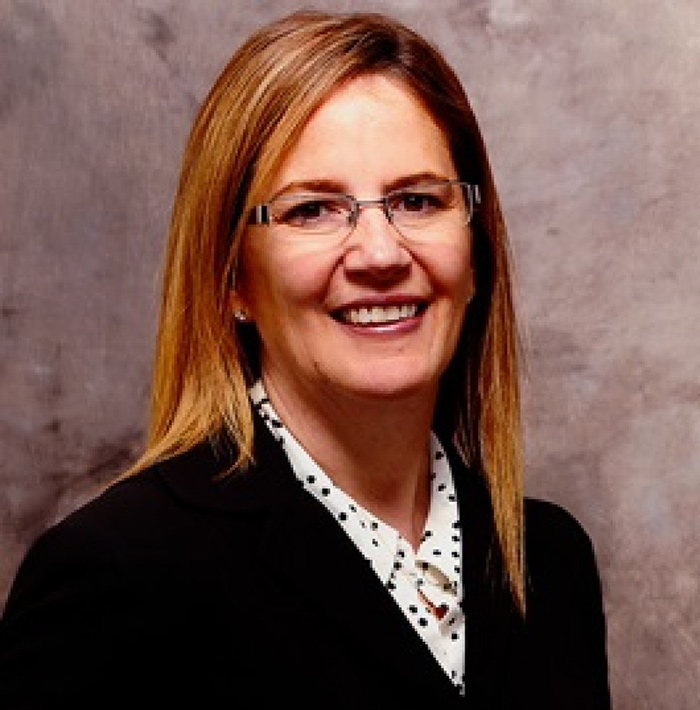 Just recently Boston Medical Center and Massachusetts General Hospital jointly held an 8-hour MAT waiver training, conducted by four NPs and attended by 120 NPs, the maximum for that particular course. “We think there is special value in NPs training NPs,” said Colleen LaBelle, MSN, RN-BC, CARN. LaBelle is Program Director for the Massachusetts State OBAT B and a PCSS clinical mentor.
Just recently Boston Medical Center and Massachusetts General Hospital jointly held an 8-hour MAT waiver training, conducted by four NPs and attended by 120 NPs, the maximum for that particular course. “We think there is special value in NPs training NPs,” said Colleen LaBelle, MSN, RN-BC, CARN. LaBelle is Program Director for the Massachusetts State OBAT B and a PCSS clinical mentor.
“NPs are really seeing this as a priority,” LaBelle said. “We’re all pushing to get waivered to expand access to care.” According to the National Institutes of Health, only about half of all counties in the country have a clinician who is waivered to prescribe buprenorphine.
Kristin Wason, NP, who has a waiver to prescribe buprenorphine, said this: “By training, nurse practitioners are exceptionally qualified to manage and promote the total health and well-being of all patients. I am excited to be a part of this particular training as it is one of many examples of NPs stepping up to improve the health of our communities by removing barriers to care.”
In 2016, Congress passed the Comprehensive Addiction Treatment and Recovery Act, which gave permission for NPs and physician assistants (PA) to apply for a waiver to prescribe buprenorphine to treat opioid use disorder (OUD). Since passage, more than 5,000 NPs have taken the waiver course and applied for the waiver, according to LaBelle. In the 15 years physicians have been able to apply for a waiver, approximately 39,000 have applied—and fewer than half prescribe the medication or prescribe at the patient limit, according to a study conducted by the Journal of Substance Abuse Treatment. Of those physicians who were not waivered to prescribe buprenorphine, 33.8 percent indicated “nothing would increase their willingness to prescribe buprenorphine.” It is still too early to know if NPs will prescribe at higher rates, LaBelle said.
Paige McCarthy, MSN, APRN, MPC began prescribing buprenorphine three months after completing her waiver training last summer. Treating addictions is simply part of her practice and not the focus. “The biggest reason I treat OUD is because I’m in primary care. I don’t want to feel I have to send my patients somewhere else. I want to capture them while I have them.” She feels that if patients come to her seeking treatment, they might not get the treatment they need in time if she were to send them to a specialist. That delay could mean their lives, she said. “That’s what we’re supposed to do, help them.”
Other NPs agree with McCarthy. Annie Lee, MSN, MPH, NP, CARN-AP said, “As an NP in primary care I felt it was my responsibility to be able to treat all patients under my care who suffer from chronic illness. Substance use [disorder] is one of them.”
Christopher J. Shaw, NP, said he obtained his buprenorphine waiver because “it allowed me to proactively respond to one of the most life threatening epidemics of our time. It is important for me to be part of this course to engage with advanced practice clinicians and listen to and share common goals of caring for and treating patients.” Shaw is NP Team Leader Addictions Consult Service at Massachusetts General Hospital and was one of the instructors for the Boston training.
One issue NPs are tackling is to expand the number of states without practice restrictions. Currently, 28 states prohibit NPs from prescribing buprenorphine without direct supervision from a physician—restrictions that local NP organizations are currently challenging in hopes of gaining more autonomy in NP practices. Such efforts in many states have been met with resistance by some groups citing quality concerns and lack of oversight. In Oklahoma, for example, the legislature rejected a change that would have given NPs there more autonomy in their practices.
“In the midst of an opioid crisis, it seems irresponsible to not have as many practitioners as possible treating” patients with evidence -based practices, LaBelle said.
Read article Why aren’t physicians prescribing more buprenorphine?.
